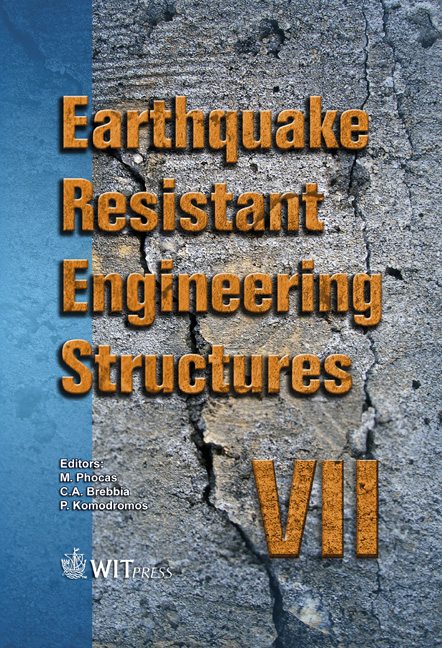Estimation Of The Maximum Allowable Drift At The Top Of A Shear Wall (within Elastic Limits)
Price
Free (open access)
Transaction
Volume
104
Pages
12
Page Range
115 - 126
Published
2009
Size
346 kb
Paper DOI
10.2495/ERES090111
Copyright
WIT Press
Author(s)
M. Khouri
Abstract
There is a considerable uncertainty regarding the evaluation of the maximum allowable story drift as well as the maximum allowable lateral drift at the top of a building. Various seismic codes suggest values that range from h/50 to h/2000 where h is the height of a building. This paper reviews the maximum allowable drift presented in various seismic codes and uses structural dynamics along with the finite element method to suggest a formula that can be used to determine the maximum allowable drift at the top of a shear wall based on the maximum allowable strain values in that shear wall. This formula provides an elastic limit for the drift after which the designer knows that his reinforced concrete section is going into the plastic region. In comparing the results generated by the suggested formula with the drift values suggested by other codes, it can be observed that the results are very close to the values obtained by the use of the French code PS92 and far from the values suggested by UBC and IBC. 1 Introduction A shear wall is one of the main structural elements in a reinforced concrete building. It is constructed to support mainly the lateral forces due to wind or earthquakes. Under these loads, the structure will have a lateral displacement (what is known nowadays as Drift) the magnitude of which is defined by the movement of the lateral load resisting elements (shear walls). The question remains: what is the allowable drift at the top of a given shear wall? And consequently what is the maximum allowable drift at the top of a building? Many investigators have suggested values for maximum displacement at the top of buildings. These values range from taking h/50 where h is the height of the building as suggested by The Uniform Building Code (UBC97) [1] and
Keywords





